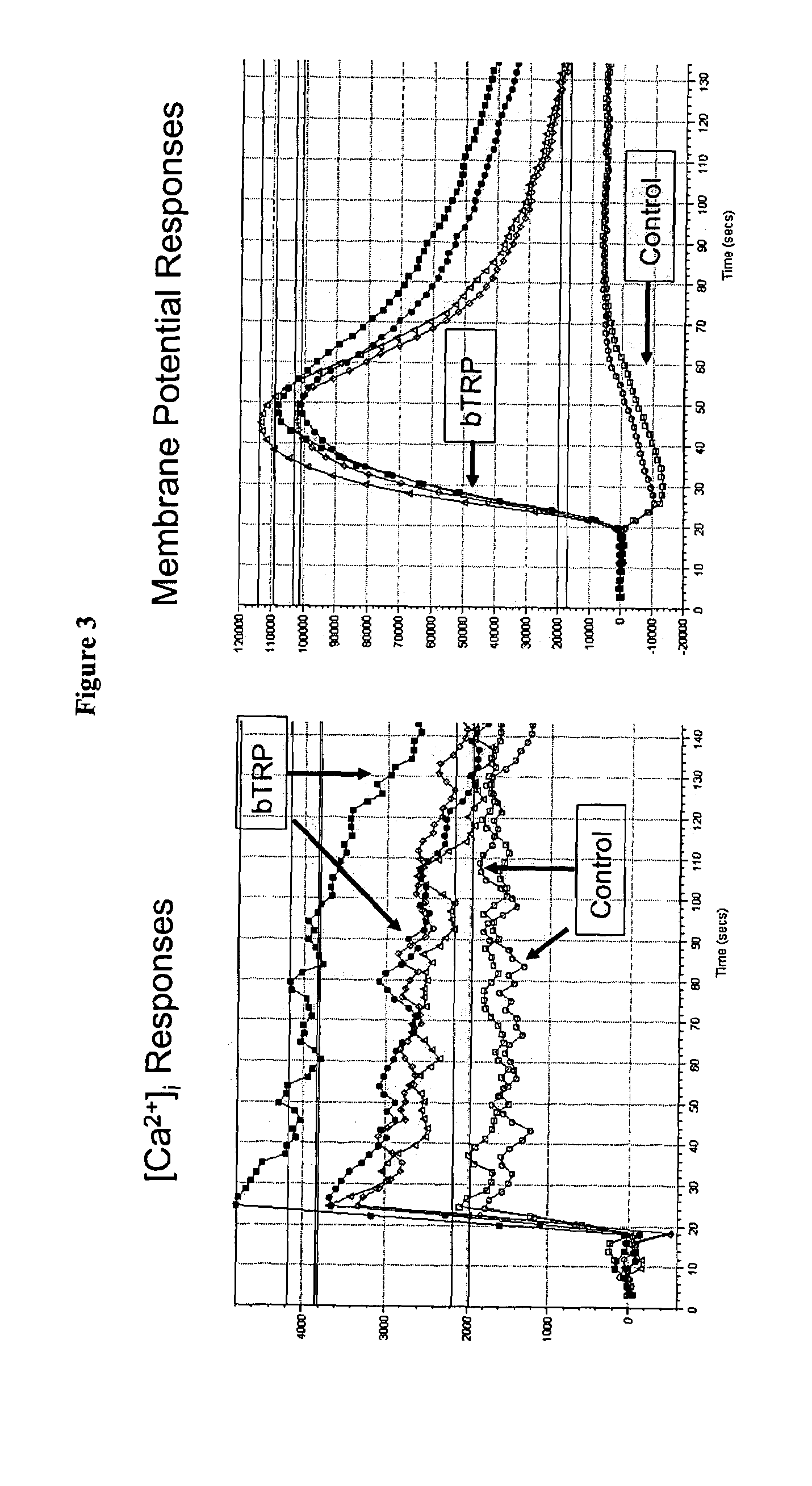Methods and compositions for treating and diagnosing diabetes and related diseases involving beta-TRP
a technology of beta-trp and composition, which is applied in the field of methods and compositions for treating and diagnosing diabetes and related diseases involving beta-trp, can solve the problems of hyperglycemia (abnormally high level of glucose in the blood), not all patients with high levels of these antibodies develop iddm, and decrease the amount of secreted insulin, so as to induce glucose-stimulated insulin production, enhance the expression or activity of polypeptides, and enhance the effect o
- Summary
- Abstract
- Description
- Claims
- Application Information
AI Technical Summary
Benefits of technology
Problems solved by technology
Method used
Image
Examples
example 1
[0184]This example demonstrates that βTRP is expressed in pancreatic islet cells and demonstrates that introduction of βTRP into islet cells of diabetic animals improves glucose stimulated insulin secretion.
[0185]Custom Affymetrix™ oligonucletide arrays were used to survey islet gene expression. Microarray probe set MBXRATISL12881 was called “Present” by the Affymetrix GeneChip™ analysis software in 5 independent rat islet mRNA samples and absent in 10 other tissues examined. The mouse probe set MBXMUSISL22609 also demonstrated a high degree of enrichment in islets and in the cultured beta cell line (betaHC9) mRNA samples relative to those of other tissues (FIG. 1B). Multiple clones for the corresponding cDNAs were found in human, rat and mouse islet libraries, and sequencing of these revealed that the encoded protein was a predicted TRP channel, which we named betaTRP. The human gene for betaTRP had been sequenced as part of an examination of the Beckwith-Wiedeman syndrome locus an...
example 2
[0188]This example demonstrates methods for high throughput screening of modulators of βTRP.
[0189]Activation (opening) of the pancreatic β cell cation channel βTRP represents a novel mechanism for enhancing glucose-stimulated insulin secretion in individuals with type II diabetes. Type II diabetes results when pancreatic beta cells are unable to compensate for the increased insulin demand caused by peripheral insulin resistance. Therapeutic agents such as sulphonylureas and meglitinides promote insulin secretion via the same molecular mechanism (KATP channel closure) as the major pathway by which glucose regulates insulin secretion. Although these agents are widely used, they can be less than ideal in that they have intrinsic potential to cause hypoglycemia and also have significant rates of primary and secondary failure. Activation of mechanisms in the β cell that do not in themselves trigger insulin secretion but potentiate Ca++ influx after glucose-dependent KATP channel closure ...
example 3
[0222]This Example demonstrates solvent dose responses and responses to other channel modulators.
[0223]Effect of DMSO
[0224]In the FLEXStation assay, upon the addition of the testing compound (a 25 μl of compound solution was added to each well which contains 100 νl of diluted dye) the CHO-βTRP cells tend to lose some intensity of fluorescent signal. The drop in RFU signal was indistinguishable between the assay buffer and low concentration of DMSO (<0.5%), but was significantly exaggerated by 2.5% DMSO (FIG. 5). On the other hand, we did not observe any non-specific depolarization responses to DMSO.
PUM
| Property | Measurement | Unit |
|---|---|---|
| Fraction | aaaaa | aaaaa |
| Fraction | aaaaa | aaaaa |
| Fluorescence | aaaaa | aaaaa |
Abstract
Description
Claims
Application Information
 Login to View More
Login to View More - R&D
- Intellectual Property
- Life Sciences
- Materials
- Tech Scout
- Unparalleled Data Quality
- Higher Quality Content
- 60% Fewer Hallucinations
Browse by: Latest US Patents, China's latest patents, Technical Efficacy Thesaurus, Application Domain, Technology Topic, Popular Technical Reports.
© 2025 PatSnap. All rights reserved.Legal|Privacy policy|Modern Slavery Act Transparency Statement|Sitemap|About US| Contact US: help@patsnap.com



